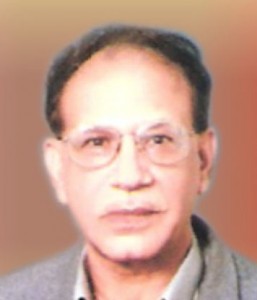Mohammad Jamil
National Investigation Agency (NIA) Inspector General Sanjeev Kumar Singh on Sunday termed the attack on one of its officer, Muhammad Tanzil Ahmad, as a ‘planned’ one. “One of our very brave officers, Tanzil Ahmad, had gone to his home to attend a function. When he was coming out from that function, a planned attack took place on him. He was fired upon and in the firing, he was killed. His wife also got injured,” Singh told the media. Giving details he said Tanzil was an assistant commandant with the Border Security Force and was currently on deputation with the NIA, and acted as the liaison officer for the five-member Pakistan Joint Investigation Team (JIT) that was in Delhi to probe the Pathankot attack. Sources said he was on the radar of Indian Mujahideen (IM), and had also played a role in busting an alleged ISIS module.
He was instrumental in arrests made in the Burdwan blast case of October 2014. “He engineered many a surrender in the case by motivating the accused through his contacts to cooperate with the agency,” an officer said. However the question is why the assailants selected the timing when he had acted as a liaison officer for the JIT from Pakistan. According to another report, Tanzil Ahmed was also part of the India government team to probe Pathankot terror attack, and he must be aware of the security establishment’s foul play. However, members of Pakistan’s JIT can shed some light about the attitude of Tanzeel Ahmed. Perhaps NIA officials were not happy the way he conducted himself. There is a perception that India has eliminated him because he was aware of the foul play by the NIA officials for having conducted false flag operation at the behest of the government.
In 2014, Indian media had carried a report stating that a former home ministry officer alleged that a member of the CBI-SIT team had accused incumbent governments of orchestrating the terror attack on Indian Parliament and the 26/11 carnage in Mumbai. R.V.S Mani, who as home ministry under-secretary signed the affidavits submitted in court in the alleged encounter case, had said that “Satish Verma, until recently a part of the CBI-SIT probe team, told him that both the terror attacks were set up with the objective of strengthening the counter-terror legislation”. However, such false flag operations, among other things, were also intended to malign Pakistan. In fact, because of India’s false flag operations, India and Pakistan were on the verge of a war, as India had moved its troops to the forward positions on the border. But after it realized that Pakistan cannot be cowed down by such shenanigans and ruses, it withdrew its forces from the frontlines.
Anyhow, it was a matter of their internal politics and blame game, but India often resorts to false flag operations to denigrate Pakistan. False flag terrorism occurs when elements within a government stage a secret operation whereby government forces pretend to be a targeted enemy while attacking their own forces or people. The attack is then falsely blamed on the enemy in order to justify going to war against that enemy. India seems to have learned from the US and other countries that have been resorting to false flag operations. The Taj Hotel attack that lasted several days was played out in all its gory details on television. Angry mobs were whipped into a frenzy condemning Pakistan, the ISI and its alleged accomplices. In July 2013, revelations by Indian bureaucrats, however, painted that attack as well as the December 13, 2001 attack on India’s parliament in very different light. Media had carried many stories that Indian government had planned terror attacks to place the blame on the ISI.
As a matter of fact, India believes that a strong and stable Pakistan is an impediment in its ambition of superseding the regional power and a future super power China. It is in this backdrop that India continues with its propaganda blitz to defame Pakistan and to get it declared a state that sponsors terrorism. Thirdly, it wants to keep pressure on Pakistan so that it stops lending diplomatic support to Kashmiris struggle for self determination. But India has failed on every count. The countries Indian Prime Minister Narendra Modi visited during the last two years, he had faced demonstrations and draww flak from Human Rights Organizations and other strata of society for committing atrocities on the people of Indian Held Kashmir. Even in India, conscientious writers, artists and intellectuals have been critical of Indian governments’ suppression of minorities.
A large number of people from across the United States held a peaceful demonstration to support the right of self-determination for Kashmiri people in Washington where world leaders of over 50 countries had gathered to discuss nuclear security. They were carrying placards that read Kashmir a “nuclear flashpoint”, “freedom for Kashmir” and demanded of the world leaders to resolve this “nuclear flashpoint”. Addressing the rally, Dr. Ghulam Nabi Fai Secretary General World Kashmir Awareness said: “All those leaders attending the Nuclear Summit and those who are interested in the world peace are urged to persuade both India and Pakistan to help resolve the Kashmir dispute for the sake of international peace and security. Kashmiri American Council President Dr. Imtiaz Khan said Kashmir was the bone of contention of nuclear tension between India and Pakistan.




